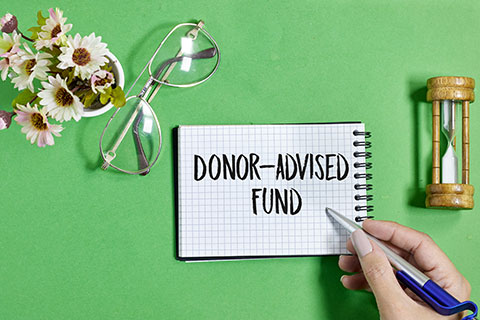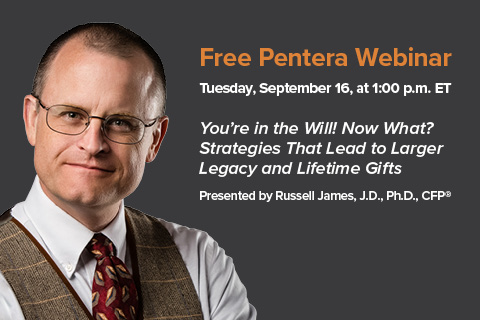
The Pentera Blog
Need to Revive Your Legacy Society?
Hoping to wake up a sleepy legacy society—or launch a new one? Pentera’s groundbreaking research and tips from CGP can help.
The important role that legacy societies play in the success of planned giving programs was established in “The Planned Giving Study: New Insights from Data on Planned Gifts,” a study commissioned by Pentera and conducted by the Indiana University Lilly School of Philanthropy (the “IU/Pentera research study”), where it was found that members of legacy societies make larger planned gifts and are more apt to make irrevocable gifts than nonmembers. You can download the full study here.
Presenters at CGP emphasized that a dynamic legacy society is an important source of donor stewardship and recruitment, but their potential is often unrealized due to lack of focus on the society. Planned giving professionals can correct this by implementing to start, restart, and maintain a strong legacy society.
Fortunately, many important steps for strengthening a legacy society come at little or no cost. For example, one suggestion was to follow the industry best practice of adding a legacy society page to an existing website because it’s a low-cost but essential step. It’s also important to include donor quotes, spotlights, and stories on the website. Highlighted society members have friends, and their friends will be inspired by the stories they find, experts said.
Launch—or relaunch—parties of legacy societies can also help. These events generate excitement and offer donors an opportunity to mingle with like-minded individuals. For existing societies, one good recommendation is to provide something new at the launch, such as a new name or logo. And remember, a society’s name and logo should reflect the organization or its mission. The IU/Pentera research study recommended that it be named after a landmark or something similar so that the name will stand the test of time for future generations.
The IU/Pentera research study also found that 21% of legacy society members make multiple planned gifts to the same organization. Another very important point to remember about legacy societies is that not everyone in the society actually ends up leaving a planned gift; in fact, about one third typically will not. An active society that keeps members informed and in touch can reduce that loss.
A related problem raised is the reluctance of many people to inform organizations that they have been included in an estate plan because the donor knows they may change their mind. A vibrant legacy society that engages its donors and communicates the benefits of reporting deferred gifts can alleviate this problem, as can simply adding “Are we in your will? Let us know so we can include you in the ____ Society” to email signatures, letterhead, and marketing response devices.
Other tips included creating “charter” memberships for founding society members, putting membership criteria in writing, and regularly checking in with members to ensure their gifts continue to reflect organizational priorities or the donor’s goals.
These tips should perk up or invigorate your program in no time!
Thanks to CGP presenters Thomas Horton, Wanda Cockey, Michael George, and Jason Shuba for some of the ideas and tips included in this article.


